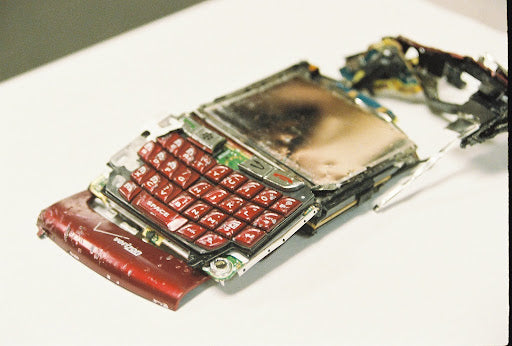How Smartphones are Contributing to Environmental Degradation

Before you jump at the opportunity to upgrade to the latest and greatest smartphone from big name brands like Apple or Samsung, you may want to consider the impact it has on the planet. Today, more than 5 billion people globally carry some sort of mobile device, and well over half of those devices are smartphones. While it may be easy to overlook the negative implications of today’s digital age, the truth is that modern-day consumerism has a detrimental impact on human populations and the environments they live. According to a study conducted by the Journal of Cleaner Production, the Information and Communications Technology industry accounted for approximately 1.6% of global greenhouse gas emissions (GHGE) in 2018. Although that number is relatively low on a broad scale, continued smartphone production and consumption trends would bring that figure to exceed 14% by 2040 - more than half of today’s current GHGE from the global transportation sector.
To avoid smartphones taking the lead with the technology industry’s largest carbon footprint, we must begin to make changes that curb the environmental effects we’re currently witnessing. Below, we dive further into how smartphone production and consumerism impact our planet and what we can do to turn the tides toward a more sustainable future.
Raw Material Mining: Unseen Implications
Nearly all big-name smartphones contain up to 62 different metals across 80% of the stable elements on the periodic table - many of which are precious metals and are at risk due to various factors such as geological availability, geopolitics, and trade economics. On average, smartphones require up to ten times as much precious metal as most laptops and desktop computers. While precious metals present some level of environmental concern, the more significant threat lies with ordinary, everyday raw materials such as iron, aluminum, and copper - the most abundant metals that make up the smartphone in your pocket. While these metals have become commonplace throughout various industries such as energy and technology, their mining processes pose a severe threat to the environment - particularly our waterways.
According to the US EPA’s Toxic Release Inventory, metal mining is the United State’s most significant toxic pollution source. Raw material mining pollutes our waterways, air, and land through various processes - leading to environmental degradation, loss of wildlife habitat, and reduced biodiversity that often extends beyond a local reach.
Smartphone Manufacturing: A Carbon Nightmare
The most environmentally detrimental part of a smartphone’s life cycle is its production, accounting for approximately 80% of its total carbon footprint. Apart from mining raw materials, the refining, transport, and manufacturing processes are primary factors that make smartphones one of the biggest carbon contributors in the tech industry. Research shows that while they require almost no energy to operate, the manufacturing process for each smartphone produces approximately 16kg of CO2 emissions. With over 2.5 billion smartphones in use today, the CO2 emissions produced by the development process equates to over 40 billion kg of CO2 - a significant figure for something so often overlooked.
E-Waste: Environmental Destruction
Annual global electronic waste (E-Waste) has reached 56 million tons as of 2019 - of which less than 20% gets recycled. The toxic metals used in smartphones break down when exposed to various environmental conditions, contaminating our water cycle, polluting the air, and rendering soil and land useless without costly remediation. It's not just the environment suffering, though. In Guiyu, China - one of the world’s most prominent e-waste recycling locations - over 80% of children are experiencing respiratory issues, along with a severe risk of lead poisoning from polluted atmospheric inhalation.
To curb the impact E-waste has on our environment and human health, consumers must begin to adopt the reuse, reduce, and recycle model - while manufacturers need to take bigger steps to reduce the number of harmful materials used in their products.
Teracube: Setting an Industry-Wide Example
To curb the environmental impact smartphone production has on the environment and human health, Teracube manufactures smartphones with an alternate mindset. We manufacture our smartphones sustainably - with our customers and planet as the focus of our operations. Teracube smartphones are engineered using eco-friendly materials and designed to last 4 years with our industry unique 4 year warranty. Teracube hopes to set an example of how technology products can be profitable and environmentally sustainable. As a final bonus, Teracube is planting a tree for every device sold - helping to offset our manufacturing carbon footprint.



 US
US CA
CA UK
UK EU
EU Global
Global



